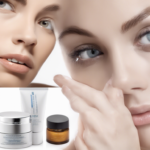Understanding the Causes of Hair Loss in Women
Hair loss in women can be a complex issue, stemming from a myriad of underlying factors. A common cause is genetics; hereditary hair loss, known as androgenetic alopecia, often leads to progressive thinning of the hair over time. Women with a family history of hair loss are more likely to experience this condition, which typically manifests as a widening part or thinning around the crown.
Hormonal changes represent another significant contributing factor. Events such as pregnancy, menopause, and thyroid imbalances can disrupt the normal hair growth cycle. During pregnancy, increased estrogen levels can result in fuller hair, but postpartum hormonal shifts often lead to significant hair shedding. Similarly, the decrease in estrogen during menopause can cause hair to thin considerably. Thyroid-related issues, whether hypo or hyperthyroidism, are also known to trigger hair loss, as these hormones are pivotal in regulating hair production.
Beyond genetic and hormonal influences, external factors play an integral role as well. Stress is a notable culprit that can precipitate hair loss through a condition known as telogen effluvium, where stress pushes a large number of hair follicles into the shedding phase. Nutritional deficiencies, particularly a lack of protein, iron, and vitamins essential for hair health, can weaken the hair, making it more prone to breaking and falling out.
Additionally, the misuse of harsh hair treatments can significantly impact hair integrity. Frequent use of chemical dyes, relaxers, and heat styling tools can lead to damage and breakage. The importance of recognizing these external stressors cannot be overstated, as modifying these habits can often impede further hair loss.
Identifying the root cause of hair loss is crucial before selecting an appropriate prevention or treatment strategy. Understanding whether the hair loss is due to genetic predispositions, hormonal changes, or external factors enables one to address the issue more effectively and adopt a personalized approach to improve overall hair health.
Effective Tips and Lifestyle Changes to Prevent Hair Loss
Preventing hair loss in women can be significantly aided by incorporating various practical tips and lifestyle changes. A balanced diet rich in essential vitamins and minerals plays a crucial role in maintaining healthy hair. Nutrients such as biotin, iron, and vitamin D are particularly beneficial for hair health. Foods like eggs, nuts, spinach, and fish are excellent sources of these vital nutrients. Ensuring a well-rounded diet helps in strengthening hair follicles and promoting overall hair health.
In addition to nutrition, adopting a gentle hair care routine is essential. Using mild shampoos and conditioners can reduce the risk of scalp irritation and hair damage. It’s advisable to avoid excessive heat styling, such as frequent use of blow dryers, curling irons, and straighteners, as they can weaken hair strands over time. Opting for air drying whenever possible can mitigate this issue. Similarly, minimizing the use of chemical treatments, including hair dyes and perms, can prevent hair from becoming brittle and prone to breakage.
Stress management is another significant factor in preventing hair loss. Chronic stress is a well-known trigger for hair shedding and can disrupt the hair growth cycle. Techniques such as meditation, yoga, and regular exercise can substantially mitigate stress levels. Moreover, ensuring sufficient sleep each night is paramount for overall health and well-being, consequently influencing hair health positively.
Incorporating these lifestyle changes into daily routines can lead to noticeable improvements in hair health and a reduction in hair loss. A comprehensive approach that involves both external care and internal nourishment is key to maintaining strong and healthy hair.
Treatment Options for Improving Hair Health and Growth
Women have a myriad of options available to improve hair health and promote growth, ranging from natural remedies to professional treatments. A holistic approach usually yields the best results, often requiring a combination of different techniques tailored to individual needs.
One popular natural remedy is the use of essential oils. Oils such as rosemary and peppermint have been shown to stimulate hair follicles, increasing blood circulation to the scalp. Rosemary oil is renowned for its ability to enhance cellular generation, while peppermint oil is known for its invigorating properties. A few drops of these oils, diluted with a carrier oil like coconut or jojoba oil, can be massaged into the scalp several times a week.
Scalp massages themselves are a highly effective, natural treatment to boost hair health. By improving blood flow to the hair follicles, regular massages can strengthen the roots and lessen tension, which might contribute to potential hair loss. This simple, stress-relieving practice can be incorporated into your nightly routine without any side effects.
Over-the-counter treatments such as minoxidil are also a popular choice. Minoxidil, commonly available in both liquid and foam forms, promotes hair growth by directly stimulating hair follicles. It requires consistent application and usually shows results within several months. However, potential side effects include scalp irritation and unwanted facial hair growth, making it essential to consult with a healthcare specialist before use.
For more advanced options, in-clinic treatments like PRP (Platelet-Rich Plasma) therapy offer promising results. PRP therapy involves drawing a small amount of your blood, processing it to concentrate the platelets, and then injecting the enriched plasma into your scalp. This procedure encourages tissue regeneration and can significantly improve hair growth and density. Though PRP is generally safe, it might cause mild discomfort, redness, or swelling.
Choosing the right treatment depends significantly on individual hair types and conditions. For instance, those with oily scalps might benefit more from peppermint oil, while individuals experiencing significant hair thinning might require professional treatments like minoxidil or PRP therapy. Consulting with a healthcare or hair specialist is imperative to tailor an effective plan suited to one’s specific needs.




